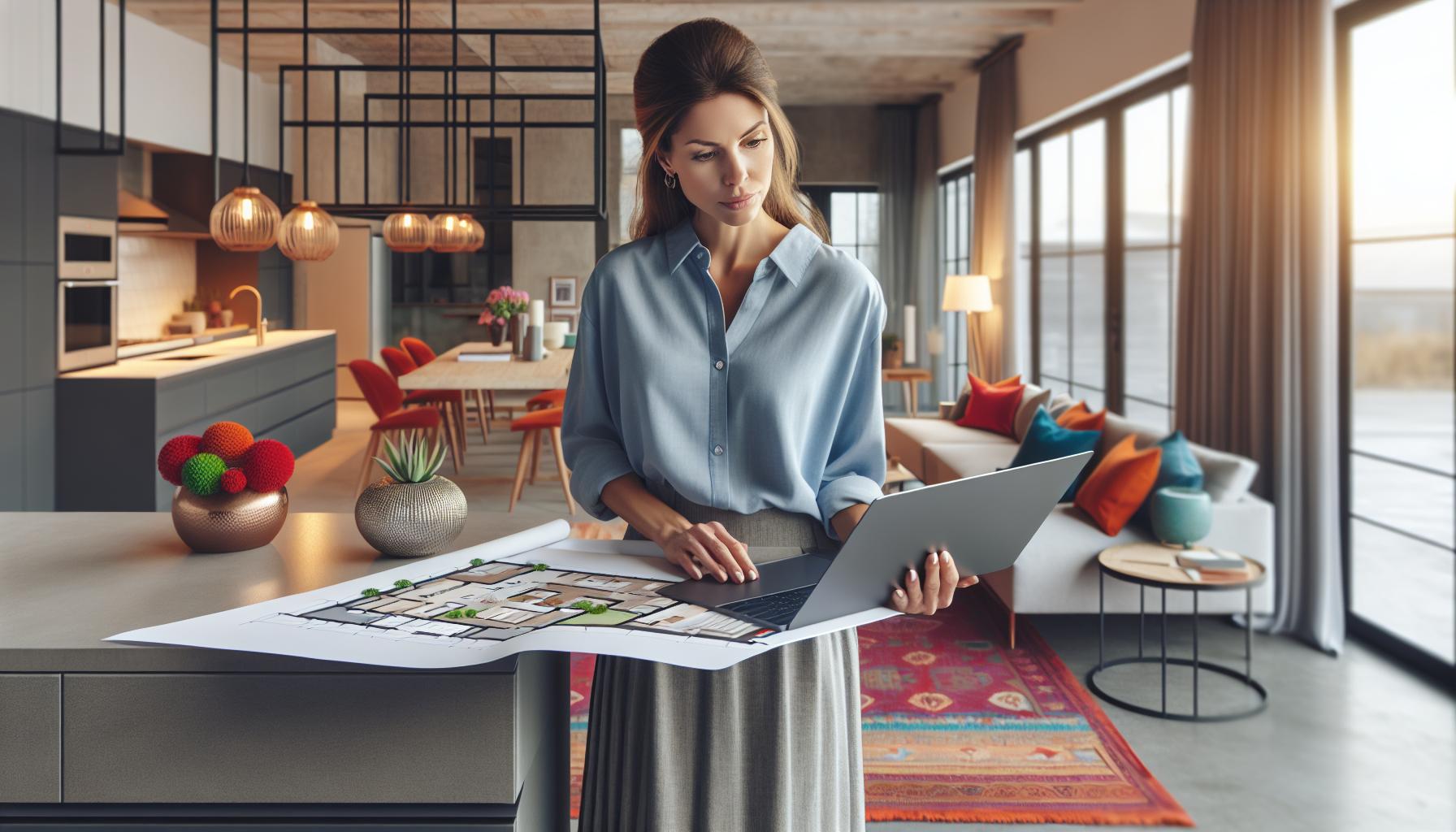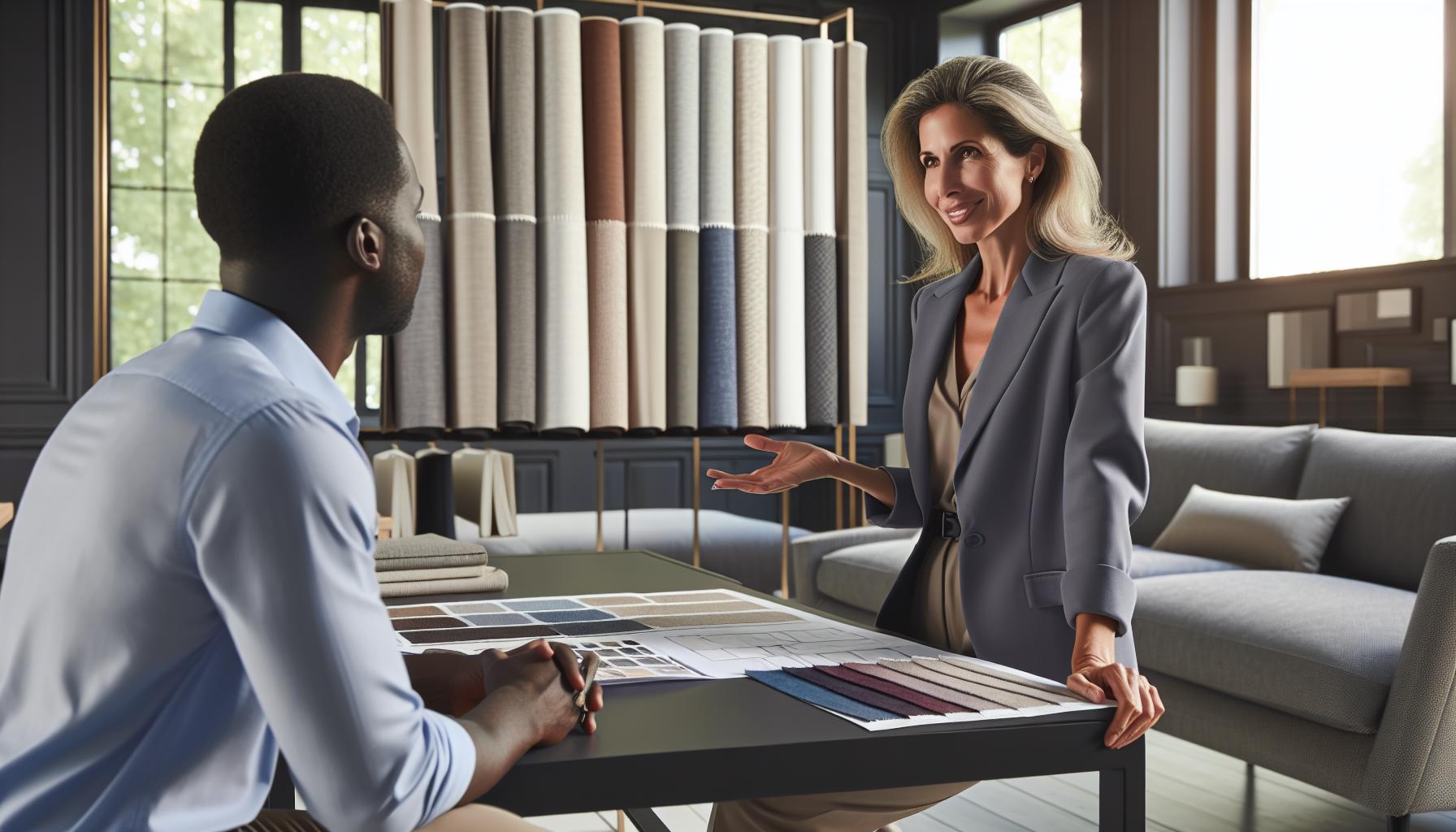Navigating the world of interior design can feel overwhelming, especially when it comes to understanding fees. Many homeowners dream of transforming their spaces but often hesitate due to uncertainty about costs. Interior design fees can vary widely based on factors like project scope, designer experience, and location.
Knowing what to expect can help clients make informed decisions and budget effectively. Whether hiring a designer for a single room or an entire home renovation, understanding the fee structures—like hourly rates, flat fees, or percentage of the project cost—can demystify the process. This article will break down the various types of interior design fees and offer insights into how to choose the right designer while staying within budget.
Key Takeaways
- Variety of Fee Structures: Interior design fees can differ based on the pricing model, including hourly rates, flat fees, and percentages of project costs, catering to various client needs and project scopes.
- Hourly Rates: Professionals may charge anywhere from $50 to $500 per hour, influenced by experience and location, making this option suitable for smaller projects or consultations.
- Flat Fees: Offering predictable budgeting, flat fees encompass a single cost for defined projects, such as room makeovers or complete renovations, simplifying financial planning for homeowners.
- Percentage-Based Fees: Typically ranging from 10% to 20% of the overall project cost, this structure aligns the designer’s compensation with project scale, ensuring accountability in managing project budgets.
- Key Influencing Factors: Fees can vary significantly based on the designer’s experience, project complexity, and geographic location, emphasizing the importance of understanding these factors when selecting a designer.
- Budgeting for Design: Establishing a realistic budget, understanding the value of design services, and considering contingency funds are essential steps for homeowners to effectively navigate interior design projects.
Interior Design Fees
Interior design fees encompass various pricing structures that reflect the complexity and scope of projects. Homeowners encounter multiple fee types, each with its unique attributes tailored to different needs.
- Hourly Rates: Many designers charge by the hour. Rates can range from $50 to $500 per hour, influenced by designer experience and regional market rates.
- Flat Fees: Flat fees indicate a predetermined cost for a project. This structure benefits clients by providing clarity and predictability in budgeting.
- Percentage of Project Cost: Designers may charge a percentage, typically between 10% and 20%, of the overall project cost. This method aligns the designer’s compensation with the project scale, ensuring mutual interest in achieving quality results.
- Markup on Goods: Designers often add a markup—usually between 20% and 40%—on the products and furnishings they purchase for clients. This markup compensates for procurement and design services.
Various factors influence these fees, including project scope, designer qualifications, and geographical location. Understanding these components helps homeowners select an interior designer that aligns with their budget while fulfilling their design aspirations.
Types Of Interior Design Fees

Understanding the various types of interior design fees is essential for homeowners to manage their budgets effectively. Here are the common fee structures designers use.
Hourly Rates
Hourly rates typically range from $50 to $500, depending on the designer’s experience and geographic location. Designers track the hours worked on a project and bill clients accordingly. This structure benefits clients with smaller projects or those needing specific advice. Homeowners can evaluate the estimated total cost based on the designer’s hourly rate and anticipated hours.
Flat Fees
Flat fees entail a predetermined cost for specific projects, providing clarity in budgeting. This fee structure commonly applies to defined projects like single-room makeovers or full-home renovations. Flat fees simplify planning, as clients know upfront what to expect financially. Designers assess the project’s scope and complexity to determine the final fee, allowing for smoother transactional processes.
Percentage Of Project Cost
Percentage of project cost fees align a designer’s compensation with the overall project’s scale, typically ranging from 10% to 20%. This structure incentivizes designers to manage project budgets effectively and maintain quality throughout. Clients receive transparent cost projections based on the anticipated project expense, making it easier to gauge total costs. This fee arrangement is often used for larger projects, where the designer’s involvement extends across multiple facets of the design and implementation process.
Factors Influencing Interior Design Fees

Interior design fees vary significantly based on several key factors. By recognizing how these elements impact costs, clients can better navigate their design projects.
Experience And Expertise
Experience and expertise significantly affect interior design fees. Designers with extensive portfolios or specialized knowledge often charge higher rates, reflecting their skill level. For instance, novice designers might charge between $50 and $100 per hour, while seasoned professionals can demand $150 to $500 or more. Clients can assess a designer’s past projects, client testimonials, and educational background to evaluate their qualifications.
Project Complexity
Project complexity directly correlates with design fees. Simple projects, like a single-room refresh, may incur lower costs, while comprehensive renovations involving multiple spaces demand more time and resources. For example, a full-home redesign could require several weeks of planning and execution, increasing the total fee. The intricacy of custom features, structural changes, or specialized furnishings also contributes to higher overall costs, as they require more intensive planning and specialized knowledge.
Geographic Location
Geographic location plays a crucial role in determining interior design fees. Designers in metropolitan areas typically charge more due to higher living costs and increased demand. For instance, a designer in New York City may charge upwards of $200 per hour, while a designer in a smaller city might charge around $100 per hour. Economic factors, such as local market trends and competition, will also influence pricing, leading to variations in fees across different regions.
How To Budget For Interior Design Fees

Budgeting for interior design fees requires careful consideration of several factors to ensure affordability and align with project goals.
Setting A Realistic Budget
Setting a realistic budget involves assessing total project costs, including design fees and material expenses. Homeowners should identify their spending limits before engaging with designers. Allocating 10% to 15% of the home’s value for design projects is a common practice. For example, for a $300,000 home, design budgets often fall between $30,000 and $45,000. Additionally, clients should consider contingency funds of about 10% to address unexpected expenses during the design process. This approach not only helps in maintaining financial control but also ensures a smoother execution of design plans.
Understanding Value
Understanding value in relation to interior design fees encourages clients to assess the benefits received from their investments. Quality designers not only enhance aesthetic appeal but also increase property value. Thus, paying higher fees often correlates with superior results. Clients should review portfolios and client testimonials to gauge past performance and establish trust in the designer’s capabilities. Furthermore, investing in a designer with a proven track record may result in cost savings down the line through effective resource management and innovative solutions. Balancing costs with expected value enhances clients’ overall satisfaction with their design experience.
Interior Design Fees
Navigating interior design fees doesn’t have to be overwhelming. By understanding the various pricing structures and the factors that influence costs, homeowners can approach their design projects with confidence. It’s essential to establish a realistic budget that accommodates both design fees and materials while considering potential unexpected expenses.
Investing in quality design services can significantly enhance a home’s aesthetic and value. With careful planning and research, clients can find a designer who not only meets their budgetary needs but also brings their vision to life. Ultimately, a well-informed approach to interior design fees can lead to a rewarding transformation of any space.